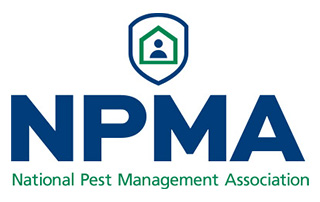CICADA KILLER CONTROL

Cicada killers are large, ominous-looking wasps that evoke a good deal of fear among people since they look very imposing. They look like a giant hornet or huge yellowjacket and are somewhat aggressive.
Cicada killers are solitary wasps and as such, they are not likely to sting unless directly handled. Even though they are solitary wasps, they may nest in aggregations (several nests in the same area) but do not live together socially as social bees and wasps do. Such aggregations may contain from a few to a hundred or so individual burrows and may persist for several years in the same location.
Not sure if you have a cicada killer problem? Or maybe you want to learn more about how cicada killers control works. Check out the following information to clarify some questions you may have.
Library Shortcuts
- Should I be concerned about Cicada Killers?
- Signs of Cicada Killers infestation
- Why do I have Cicada Killers on my property?
- Can I get rid of Cicada Killers myself?
- Tips to prevent Cicada Killers infestations
Should I be concerned about Cicada Killers?
Cicada killers are beneficial insects since they reduce the cicada population, which results in less plant damage. Although they look very imposing because of their large size, they rarely sting humans unless they are provoked or threatened. Most of the wasps seen are males that patrol the nesting area. They may fly about people, dive-bomb, or even hover in front of faces, but because they are males and don’t have stingers, they cannot sting.
Cicada Killer can cause quite a bit of damage to your property if left uncontrolled. They will dig and tunnel up to 1-inch diameter holes through areas in your yard to lay their eggs. When the eggs hatch, the female raises her babies underground.

Signs of Cicada Killers infestation
Cicada Killers appear as adults in late June or July and are mostly seen visiting flowers or digging burrows in sandy or light soil. The following are some signs that can help you identify a cicada killer infestation:
- Small granular dirt mounds that range from 2” to 5” high
- Seeing a hole, that’s about the size of a finger, at the foot of a mound of grainy dirt
The following are some of the likely borrowing sites:
- Edges of concrete slabs
- Golf course sand traps
- Lawns
- Sandy areas around playground equipment
- Sparsely vegetated slopes
Why do I have Cicada Killers on my property?
Cicada killers generally look for areas in full sunlight when they are on the search for nesting spots, they are attracted to sparse lawns and bare, dry soil, so they will make nests on your property in areas that fit these criteria. They also look for cicada populations to feed on. If you have cicadas living in the bushes around your home, cicada killers will likely follow.

Can I get rid of Cicada Killers myself?
Since cicada killers are not likely to sting, the homeowner may be able to get rid of just a couple of these wasps that fly around their properties consistently by swatting them with a tennis or badminton racket; they can also apply insecticidal dust in and around the burrow entrance when first noticing activity in the soil. When choosing to use insecticides, always read and carefully follow the product’s label directions. However, it is difficult to completely eliminate cicada killer activity with DIY treatments. If there is a heavy population of cicada killers, the best thing to do is get professional service.
Tips to prevent Cicada Killers infestations
- Maintain a dense lawn and planters with little or no bare ground and allow grass to grow a bit longer in the mid to late summer. This will make your property less desirable as a location for female cicada killers to burrow.
- To quickly kill individual wasps, apply one tablespoon of carbaryl dust inside a tunnel opening. You could also step on the wasps as they enter or leave their burrow.
- You can brush away the dirt pile at the entrance of burrows as this can disorient female wasps so that they won’t be able to find their way back to their nests.
If you are dealing with a large number of tunnels or populations, it’s time to call a professional.
Want a Free Estimate?
Need to Schedule Service?
Have a Questions?
WHAT WILL WE DO?
Our cicada killer control process typically consists of the following stages:
- Confirm or discard the existence of cicada killers in your home through an inspection.
- Identify the factors that may be causing and contributing to the infestation.
- Offer pest control programs to get the problem under control.
- Treat the existing population and prevent future infestations.
What our clients are saying
Our Partners and Awards
Service area
New Jersey:
Ocean County
Essex County
Passaic County
Morris County
Hudson County
Bergen County









